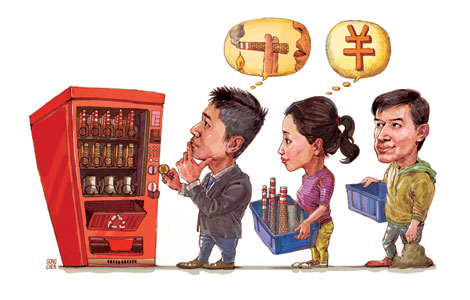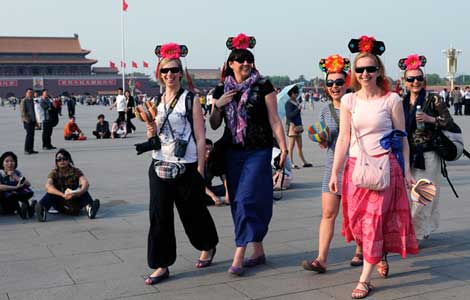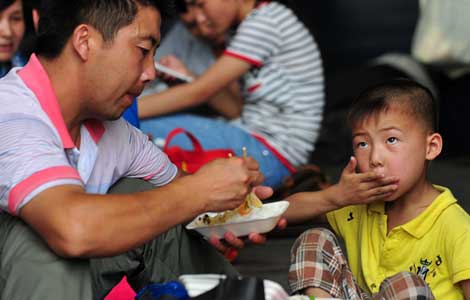Internet: A new world for small town shoppers
Updated: 2013-07-30 08:11
By He Wei in Shanghai (China Daily)
|
||||||||
China's e-commerce takeoff is reaching customers in remote areas where stores are few and the costs of building a physical retail presence are high.
According to a study by Taobao.com, China's biggest customer-to-customer electronic trading website, online shopping has in effect unlocked the consumption potential of lower-tier urban residents.
The research, which surveyed 2,006 counties in 2012, suggested that about 30 million such people purchased goods with a combined value of 179 billion yuan ($29.2 billion) on Taobao, up 87 percent year-on-year. That is a per-capita average of 6,000 yuan, eclipsing the 4,700 yuan spent by shoppers in first- and second-tier cities.
Small-town customers shopped on Taobao 54 times a year, beating the frequency of big-city buyers, who made 39 purchases annually.
Yiwu, a county-level city in East China's Zhejiang province, took the top spot in overall spending, with online transactions reaching 3.4 billion yuan.
Consumers from Qingliu county in Fujian province are the most enthusiastic digital shoppers, devoting 72.6 percent of their disposable income to online vendors on Taobao. In Beijing and Shanghai, the comparable figure was only 27 percent.
Mobile and digital channels are offering additional opportunities to build trust and brand awareness, as county-level shoppers are more inclined to buy international branded cosmetics and clothing online.
For instance, county buyers spent an average of 765 yuan for Estee Lauder's skin care products on Tmall, Taobao's sister unit where business vendors sell to individual customers. Large city residents spent only 652 yuan.
The results coincided with a McKinsey & Co study in March, which indicated that online spending raises China's total consumption and the effect is even more pronounced in less-developed areas.
While about 60 percent of online consumption simply replaces physical retail shopping, the remainder of about 40 percent is incremental consumption.
The influence is bigger in less-developed urban areas where brick-and-mortar retail is inadequate. In these areas, which are third- and fourth-tier cities, 57 percent of spending is incremental, the report added.
"We found that while incomes in these urban areas are lower, the utility of online purchasing may be higher, since they now have access to products and brands previously not available to them, in locations where many retailers have yet to establish beachheads," said Richard Dobbs, a director of McKinsey and lead author of the report.
E-commerce is turning into a powerhouse industry for China, as the country is home to the world's largest online population.
China's e-retailing has posted 120 percent compound annual growth since 2003, McKinsey figures show.
As e-commerce and mobile-payment systems encompass even the most remote hamlets, emerging consumers are reshaping, not just participating in the digital revolution, experts said.
Internet commerce is set to become the major driver for spurring domestic consumption, a goal set by the government to rebalance the economy and ensure more sustainable development, said Qi Xiaozhai, dean of the Shanghai Commercial Economic Research Center.
"It's safe to say that online shopping is a key catalyst for growth, especially when unleashing demand from lower-tier cities. It is important for merchants to build brands that resonate and inspire trust," he said.
Unlike first-tier consumers whose purchases are informed by wide exposure to products, Qi said emerging customers are usually novice shoppers for whom buying a refrigerator, a pair of jeans or even a box of diapers may be a first-time experience.
hewei@chinadaily.com.cn
(China Daily 07/30/2013 page13)
Most Viewed
Editor's Picks

|

|

|

|

|

|
Today's Top News
Spain investigators: Train driver was on phone
Apple faces more staff abuse charges
Spending surge for renewables
Beijing and Canberra to resume trade talks
Top leader vows to meet growth target
2,290 disciplined for extravagance
Japan diplomat seeks to mend ties
Draft rule requires a license for dog breeding
US Weekly

|

|















